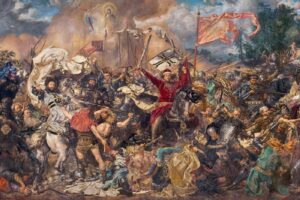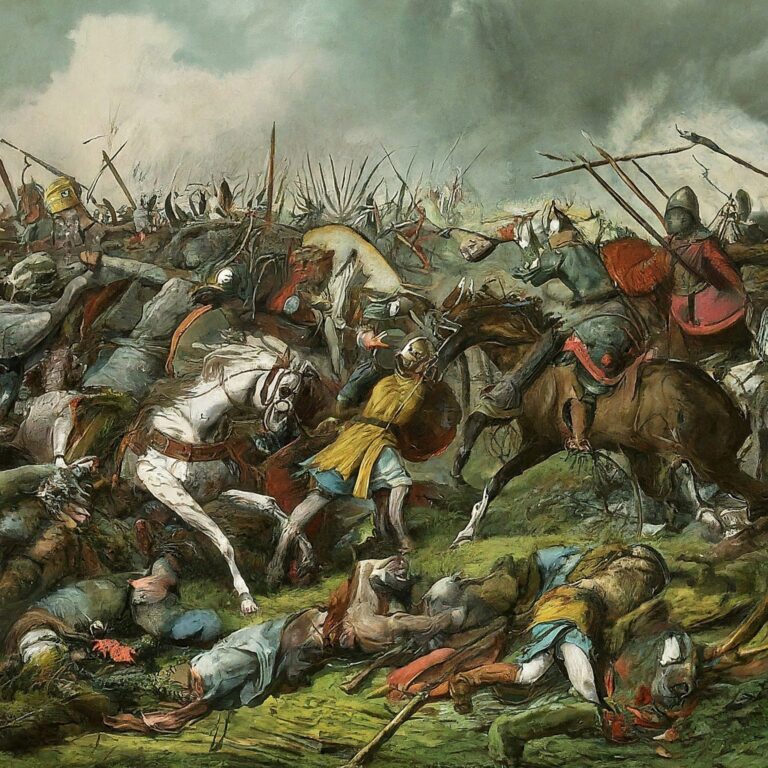The Battle of Agincourt, fought on October 25, 1415 CE, is one of the most famous battles of the Hundred Years’ War between England and France. It was a remarkable victory for the English, led by King Henry V, despite being heavily outnumbered by the French forces. The battle took place near the town of Agincourt in northern France and is remembered for the effective use of the English longbow.
In 1415, Henry V invaded France to press his claim to the French throne. After a successful siege at Harfleur, Henry’s army was weakened by disease and exhaustion. Despite this, he decided to march toward Calais, where he could regroup and resupply. The French, led by various nobles, intercepted the English army near Agincourt.
The French forces, numbering between 20,000 and 30,000, were confident of victory, as they vastly outnumbered the English army of about 6,000 men, which was primarily composed of longbowmen. The battlefield was narrow and muddy due to recent rain, which would play a crucial role in the outcome.
Henry positioned his troops strategically, with the longbowmen forming the core of his defense. As the French knights attempted to charge, they were funneled into the narrow, muddy field, which hampered their movement. The English longbowmen rained arrows down on the advancing French, causing massive casualties. The mud and the hail of arrows led to chaos in the French ranks.
After several failed charges, the English infantry and archers counterattacked, cutting down the disorganized French forces. The French suffered catastrophic losses, with many nobles killed or captured.
The Battle of Agincourt was a significant victory for the English and solidified Henry V’s reputation as a brilliant military leader. It also demonstrated the effectiveness of the longbow and the changing nature of warfare, where infantry and archers could defeat heavily armored knights. The battle further weakened the French monarchy, prolonging the Hundred Years’ War.



